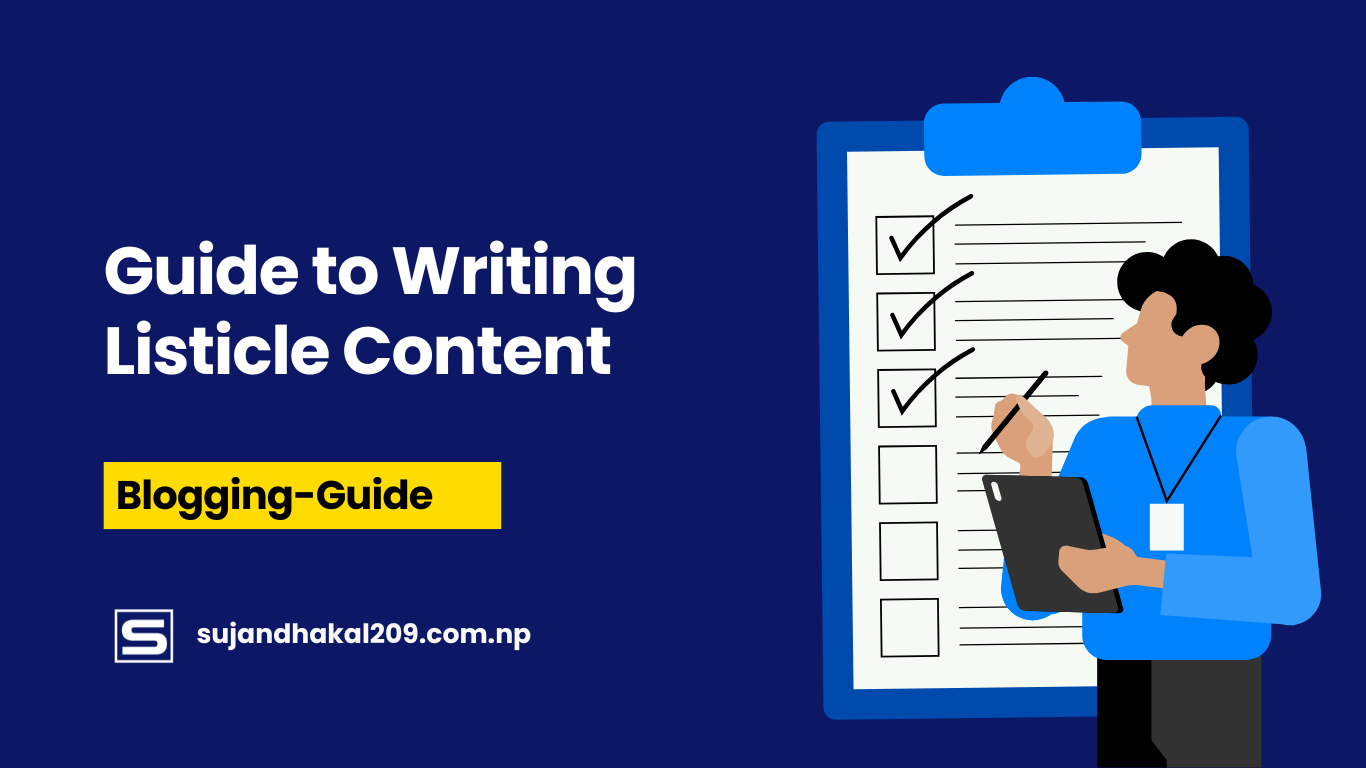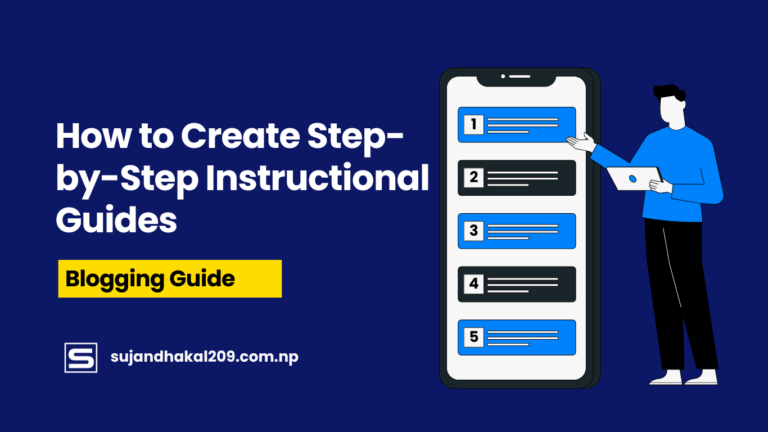Introduction
What is a Listicle?
A listicle is an article presented in a list format, combining informative content with an easy-to-read structure. Examples include “Top 10 Marketing Strategies” or “7 Best Travel Destinations for 2025.”
Why Are Listicles So Popular?
Listicles are engaging and skimmable, making them highly popular among internet users. With short attention spans, readers prefer digestible content over long, complex articles.
Benefits of Writing Listicle Content
- Improves Readability – Lists are easy to scan, making the content more accessible.
- Boosts Engagement – People love to comment, share, and interact with numbered content.
- SEO-Friendly – Search engines favor structured, well-organized content.
- Highly Shareable – Listicles perform well on social media platforms.
Understanding the Structure of a Listicle
The Perfect Title: Grabbing Attention
A compelling headline is crucial. It should be:
✅ Clear & Concise
✅ Emotionally Engaging
✅ Optimized with Keywords
Examples:
✔️ “10 Proven Ways to Boost Your Productivity”
✔️ “7 Shocking Truths About Healthy Eating”
Numbered Lists: Why Numbers Work
Using odd numbers (e.g., 7, 11, 21) tends to attract more clicks because they seem more specific and credible.
Subheadings for Easy Navigation
Each list item should have a clear subheading so readers can skim through effortlessly.
Choosing the Right Topic for a Listicle
Researching Trending Topics
Use tools like:
- Google Trends – To identify rising search queries.
- BuzzSumo – To find trending articles in your niche.
- Reddit & Quora – To see what people are asking.
Understanding Your Audience
Ask yourself:
✔️ What problems do they need solutions for?
✔️ What type of content do they consume the most?
Finding the Right Angle
Even if a topic is saturated, find a unique perspective to stand out. Example: Instead of “Top 10 SEO Tips,” try “10 SEO Mistakes You Didn’t Know You Were Making.”
Writing a Compelling Introduction
Hooking the Reader
Start with:
- A shocking statistic
- A thought-provoking question
- A relatable anecdote
Example:
“Did you know 80% of people only skim articles? That’s why listicles are your best friend in content marketing!”
Defining the Purpose
Let readers know why they should care and what they’ll learn from your listicle.
Setting the Tone
Maintain a conversational and engaging tone throughout the content.
Crafting Engaging and Informative List Items
Using Data and Facts
Back up your points with credible sources, statistics, or expert opinions.
Adding Examples and Case Studies
People relate better when they see real-life applications of the information.
Keeping it Concise and Readable
Each list item should be:
✔️ Short and Direct (150-200 words max per point)
✔️ Engaging – Avoid overly technical or boring explanations.
SEO Optimization for Listicle Content
Keyword Research and Placement
For a listicle to rank on search engines, you need to strategically use keywords. Here’s how:
- Use long-tail keywords like “how to write engaging listicles” rather than just “listicles.”
- Place the primary keyword in the title, introduction, and headings.
- Ensure natural keyword integration to avoid keyword stuffing.
Meta Tags and Descriptions
Meta descriptions should be concise (under 160 characters) while summarizing the article. Example:
“Learn how to write engaging, SEO-friendly listicles that captivate readers and boost traffic!”
Internal and External Links
- Internal links connect to other relevant blog posts on your site.
- External links cite authoritative sources, improving credibility and SEO.
Making Your Listicle Visually Appealing
Using Images and Infographics
- High-quality visuals increase engagement.
- Infographics simplify complex information.
- Stock photo sites like Unsplash and Pexels offer free images.
Proper Formatting and White Space
- Break long paragraphs into shorter, scannable sections.
- Use plenty of white space to enhance readability.
Bullet Points and Bold Text
- Use bold text to emphasize key takeaways.
- Bullet points make information digestible.
Writing a Strong Conclusion
Summarizing Key Points
Recap the most important takeaways to reinforce the main ideas.
Encouraging Engagement
Ask questions like:
“Which listicle format do you prefer? Share in the comments!”
Adding a Call-to-Action (CTA)
- Encourage sharing on social media.
- Suggest related articles for further reading.
Common Mistakes to Avoid When Writing Listicles
Overpromising in the Title
- Avoid clickbait titles that disappoint readers.
- Be honest and deliver what you promise.
Writing Lengthy or Boring Points
- Keep each point concise and engaging.
- Use storytelling to maintain interest.
Ignoring Readability and Scannability
- Use simple language and avoid jargon.
- Format the text for easy skimming.
Promoting Your Listicle for Maximum Reach
Social Media Sharing
- Share on platforms like Facebook, Twitter, LinkedIn, and Pinterest.
- Use eye-catching thumbnails to increase clicks.
Email Marketing
- Send newsletters featuring your listicle.
- Include a compelling subject line to boost open rates.
Guest Posting and Backlinks
- Collaborate with industry blogs for backlinks.
- Cross-promote on other content channels.
Examples of Highly Effective Listicles
Case Studies of Viral Listicles
- BuzzFeed’s “21 Reasons Dogs Are Better Than Cats” – Emotional appeal and humor.
- HubSpot’s “10 SEO Mistakes to Avoid” – Expert-driven, actionable insights.
Analysis of Their Success Factors
- Strong headlines with curiosity-driven phrases.
- Visual elements to complement content.
- Well-researched and engaging writing style.
Tools to Help You Write Better Listicles
Best Headline Analyzers
- CoSchedule Headline Analyzer – Evaluates title effectiveness.
- Sharethrough Headline Analyzer – Checks emotional impact.
AI Writing Assistants
- ChatGPT – Content generation assistance.
- Grammarly – Improves grammar and readability.
SEO Optimization Plugins
- Yoast SEO (for WordPress) – Helps optimize on-page SEO.
- SEMrush – Assists with keyword research.
Updating and Repurposing Your Listicle Content
Refreshing Old Content
- Add new statistics and updated information.
- Remove outdated references or tools.
Transforming Listicles into Other Formats
- Convert into a YouTube video or infographic.
- Repurpose as a Twitter thread or LinkedIn post.
The Future of Listicle Content in SEO
Trends in Content Marketing
- AI-generated content is on the rise.
- Interactive listicles with quizzes and polls engage audiences.
Evolving Reader Preferences
- People prefer short, visually rich articles.
- Voice search is shaping content structure.
Conclusion
Writing effective listicle content requires engaging storytelling, SEO optimization, and clear structure. By choosing the right topic, formatting it well, and promoting it effectively, your listicle can drive traffic, boost engagement, and rank higher on search engines.
Start implementing these strategies and watch your content performance soar!
FAQs
1. What is the ideal length for a listicle?
A well-structured listicle should be between 1,500 – 3,000 words for SEO and engagement purposes.
2. Do listicles perform well on Google?
Yes! Listicles are scannable, engaging, and optimized for user intent, making them Google-friendly.
3. Can I write a listicle on any topic?
Absolutely! Just ensure it’s relevant to your audience and offers valuable insights.
4. How do I make my listicle stand out?
Use unique insights, data, humor, and visuals to make it engaging.
5. What are the best tools for writing listicles?
Grammarly, CoSchedule Headline Analyzer, BuzzSumo, and Yoast SEO are great for crafting high-quality listicles.





